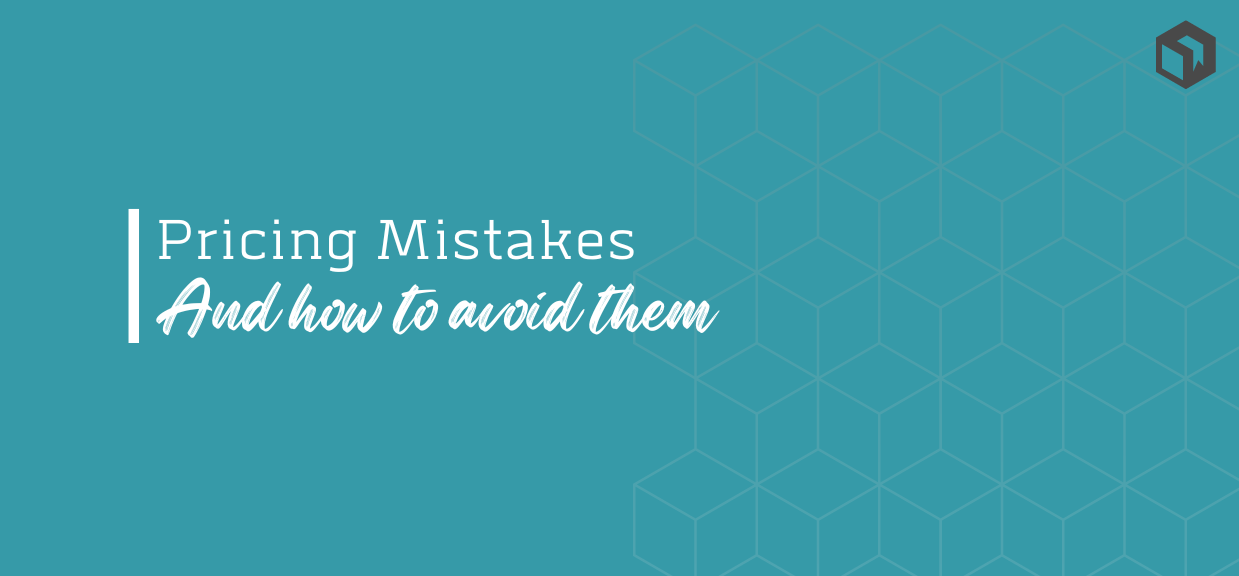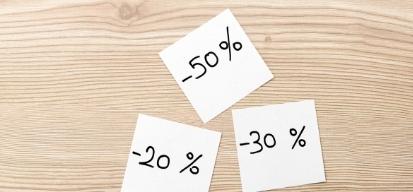Pricing Mistakes (And How To Avoid Them)
We show you 4 common mistakes online sellers make when pricing their products, and show you how to fix.

DTC makers, when first starting out, often make a handful of common mistakes with their pricing. We show you how to identify these mistakes and, most importantly, how to fix them so you can be sure you are making the money you need to grow your business.
Ready to take your Etsy store to the next level?
Discover how Craftybase is the Etsy inventory software you've been missing out on: track raw materials and product stock, COGS, pricing and much more. It's your new production central.
Pricing Mistake #1: Not knowing your costs

The first and most important step in pricing your products is to know your costs. This includes the cost of goods sold (COGS), shipping, packaging, and any other fees associated with getting your product to the customer. If you don’t know your costs, you can’t price your products properly. Not only will you not be making enough money to cover your costs, but you also risk pricing yourself out of the market.
How to fix:
To avoid this pricing mistake, calculate your costs before you start pricing your products. This will help you determine a base price for your products and ensure that you are making a profit on each sale.
Create a bill of materials (BoM) that contains each and every raw material that goes into making your product so you can calculate your unit production costs.
Check out our free BOM template for Excel and Numbers here →
Pricing Mistake #2: Not considering the competition

When pricing your products, you also need to take into account what your competition is charging for similar products. If you price your products too high, you risk losing potential customers to the competition.
However, if you price your products too low, you may be perceived as a low-quality option. It’s important to find the right balance so that you are pricing your products competitively while still making a profit.
Knowing this, one other common pricing strategy used by first-time sellers is to look at your established competitors and price under what they are selling similar items for.
The main issue with this is that you don’t know their internal production processes: how they make their items and what materials they purchase makes a huge difference to their profit margins.
At the worst, they could be “loss leading” on the products you are looking at: having a negative profit margin on a couple of products in order to drive traffic to other products in their range. Replicating these prices without also understanding their strategy is a recipe for disaster!
Another reason why this pricing strategy is dangerous is that you are also assuming that you are making the same items exactly the same way: what if they have figured out a way to make your item in half the time with cheaper materials, and this is why they have set this price? All in all, not a good strategy.
How to fix:
To fix this pricing mistake, you need to take the time to calculate your own costs so that you know how much it costs you to produce your product (see the pricing mistake point above for more details on this).
Once you know your true costs of production, you can now factor in the competition and see how they are pricing their products and then find a price point that works for your margins and also your place in the market.
Pricing Mistake #3: Not understanding the value of your product

Another common pricing mistake is not understanding the value of your product. Just because you think your product is worth a certain amount doesn’t mean that your customers will agree.
Likewise, there is nothing worse than hearing comments like “I can’t believe how cheap your products are! I would have gladly paid twice as much!”
How to fix:
Dedicate time to research your target market and customer to ensure you understand how much they are prepared to pay for items like yours.
This amount may be much higher than you think!
Pricing Mistake #4: Using pricing that just “Feels Right”
A mistake is to randomly pick a price based on what “feels right”. This can be a personal decision, or it might be the result of asking friends and family what they think you should charge.
This, of course, does not factor in your material and labor costs, so it’s a really risky strategy - you can very quickly end up in a situation where you are selling your products for less than you made them for.
The main problem with this pricing strategy is that it’s not based on any data or research, so it’s likely that you’ll either end up pricing your products too high or too low.
How to fix:
Instead of pricing your products based on what “feels right”, price them based on your costs and what you think your customers will be willing to pay. This will help you to find the right balance and avoid pricing mistakes.
Learn more about how to properly calculate your labor costs →
Pricing Mistake #5: Not accounting for overheads

When pricing your products, it’s important to account for all of your costs, including your overheads. Overheads are the expenses that you have to pay even when you’re not making any products, such as rent, insurance, and utilities.
Not accounting for these costs can lead to pricing mistakes, as you might end up pricing your products too low and not making a profit.
How to fix:
To avoid this pricing mistake, make sure to include all of your costs in your pricing calculations, including your overheads. This will help you to ensure that you are pricing your products correctly and making a profit.
Read our article here for guidance on how to factor in overheads to your product pricing
Pricing Mistake #6: Not considering promotions & discounts

When pricing your products, it’s important to consider how you will promote them and offer discounts. This is because promotions and discounts can have a big impact on your pricing.
For example, if you are running a promotion where customers can get 10% off their purchase, you will need to make sure that your pricing reflects this. Otherwise, you might end up selling your products at a loss.
How to fix:
To avoid this pricing mistake, make sure to consider potential promotions and discounts when pricing your products.
You’ll want to ensure that you have a profit margin wide enough to cover any promotions you are likely to offer.
This will help you to ensure that you are pricing your products correctly and making a profit.
Pricing Mistake #7: The “What would I pay?” Strategy

Another common error is to ask yourself what you would pay if you were the customer. This is a similar strategy to some of the other pricing mistakes above, in that it does not account for any base costs to produce your item.
It’s also a really flawed strategy as it assumes that your customers are exactly the same as you in terms of what they find expensive or cheap.
Essentially the phrase to remember here is “You Are Not Your Customer”. You might well be able to afford to purchase your own products, however, there are many handmade sellers that cannot possibly justify the expense of purchasing their own products…and this is completely okay!
Pricing Mistake #8: Go Low prices to get your initial sales

The final flaw is to assume that all small businesses make losses in the start in order to “get established” and noticed: it is only later when you are successful that you should start to see any profits.
Unless you have generous and patient investors behind you that is fine to see losses in your first couple of years; making a loss at the start puts you at a significant disadvantage and can be the difference between you being in business in a year’s time or not.
How to fix
Your aim is to try and make a profit from your very first sale onwards! Every dollar you make on top of your internal labor and materials is profits you can reinvest into your business to make it even better.
Related: How to use buyer psychology and magic numbers to improve your prices →
Pricing Mistake #9: Not reviewing your prices regularly

Finally, one of the most common pricing mistakes is not reviewing your prices regularly. Prices change over time, and if you’re not reviewing your prices regularly, you might find that you’re pricing your products too low or too high.
How to fix:
To avoid this pricing mistake, make sure to review your prices on a regular basis. This will help you to ensure that you are pricing your products correctly and making a profit.
Using software like Craftybase can help you to keep track of your pricing, profit margins, and more in real-time and ensure that you’re always pricing your products correctly. Try our 14 day free trial today!
Conclusion
Pricing your products correctly is essential to running a successful handmade business. By avoiding these common pricing mistakes, you can be sure that you are pricing your products correctly and making a profit.
So, with these tips in mind, take a look at your current pricing and see how you can improve - keep in mind also that pricing is something you evolve and tweak as you learn more about your own operations and what your target customers are like. Experiment, experiment, experiment!
